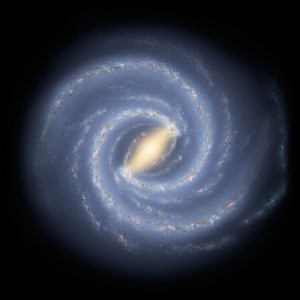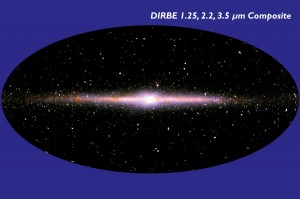Saturn's aurorae images 'unique to science' Saturnus aurorae foto 'unik untuk ilmu pengetahuan'
Scientists from the University of Leicester have led an international study to capture space images that are unique to science. Para ilmuwan dari University of Leicester telah memimpin studi internasional untuk menangkap gambar ruang yang unik bagi ilmu pengetahuan. Researchers using the NASA/ESA Hubble Space Telescope (HST) recently took advantage of the rare opportunity to record Saturn when its rings are edge-on, resulting in a unique movie featuring both of the giant planet's poles. Para peneliti menggunakan NASA / ESA Teleskop luar angkasa Hubble (HST) baru-baru ini memanfaatkan kesempatan langka untuk merekam cincin Saturnus ketika perusahaan tepi-on, menghasilkan film unik yang menampilkan kedua kutub planet raksasa.
Saturn is only in this position every 15 years and this prime orientation allowed a sustained study of both of its beautiful and dynamic aurorae that decorate its poles much like the northern and southern lights on our own planet. Saturnus hanya dalam posisi ini setiap 15 tahun dan ini memungkinkan orientasi utama studi berkelanjutan dari kedua aurorae yang indah dan dinamis yang menghiasi tiang yang mirip cahaya utara dan selatan di planet kita sendiri.
The study is a result of two Hubble Space Telescope programmes led by Jonathan Nichols at the University of Leicester. Penelitian ini merupakan hasil dari dua Teleskop luar angkasa Hubble program yang dipimpin oleh Jonathan Nichols di University of Leicester.
Dr. Nichols said: "Hubble has proved to be one of mankind's most important scientific tools, and this is the first time that a group in the UK has led a HST programme to observe the aurorae on another world. Dr Nichols berkata: "Hubble telah menjadi salah satu alat paling penting umat manusia ilmiah, dan ini adalah pertama kalinya bahwa kelompok di Inggris telah menyebabkan program HST untuk mengamati aurorae di dunia lain.
"However, scientists at the University of Leicester, including Prof. Stan Cowley and Dr. Emma Bunce in the Radio & Space Plasma Physics Group, did not just observe using HST, they are also actively involved in the Cassini mission which is observing many different aspects of Saturn's aurore and magnetic field, and which was recently extended to 2017 by NASA. The HST and Cassini observations combine to form a significant scientific force." "Namun, para ilmuwan di Universitas Leicester, termasuk Prof Stan Cowley dan Dr Emma Bunce di Radio & Space Plasma Physics Group, tidak hanya amati menggunakan HST, mereka juga aktif terlibat dalam misi Cassini mengamati banyak yang berbeda aspek Aurore Saturnus dan medan magnet, dan yang baru-baru ini diperpanjang sampai 2017 oleh NASA The HST dan pengamatan Cassini bergabung menjadi kekuatan ilmiah yang signifikan.. "
It takes Saturn almost thirty years to orbit our Sun so chances to image both of its poles simultaneously are rare. Dibutuhkan Saturnus hampir tiga puluh tahun untuk mengorbit matahari kita sehingga kesempatan untuk gambar kedua kutub yang jarang terjadi secara simultan. Since 1994, Hubble has been snapping pictures of the planet at a good angle, but 2009 brought the unique opportunity for Hubble to image Saturn with rings edge-on. Sejak tahun 1994, Hubble telah memotret planet dengan sudut yang baik, tapi 2009 membawa kesempatan unik untuk Hubble untuk citra Saturnus dengan cincin pada tepi-. In addition, the ringed planet was approaching its equinox when both poles are equally illuminated by the Sun's rays [1]. Selain itu, planet bercincin itu mendekati equinox ketika kedua kutub sama-sama diterangi oleh sinar matahari [1].
These recent observations go well beyond just a still image and allowed researchers to monitor the behaviour of both Saturn's poles in the same shot over a sustained period of time and create a movie. Pengamatan ini baru-baru ini melampaui hanya gambar diam dan membiarkan peneliti untuk memantau perilaku kedua kutub Saturnus dalam gambar yang sama selama periode waktu yang berkelanjutan dan membuat film. Over several days during January and March 2009, Hubble collected data from the ringed planet that aided astronomers studying both its northern and southern swirling aurorae. Selama beberapa hari selama bulan Januari dan Maret 2009, Hubble mengumpulkan data dari planet bercincin yang dibantu para astronom mempelajari baik utara dan selatan aurorae berputar-putar tersebut. Given the rarity of such an event, this new footage will likely be the last and best equinox movie that Hubble captures of our planetary neighbour. Mengingat kelangkaan peristiwa semacam, ini cuplikan baru sepertinya akan menjadi film terakhir dan terbaik equinox bahwa Hubble menangkap dari planet tetangga kita.
Dr. Nichols added: "It is particularly exciting to know that these images are unique to science. They have not, and will never again, be obtained using Hubble. This is because HST pictured Saturn at a very special vantage point, near its equatorial plane. Due to Saturn's long orbit, HST will not see this view again in its lifetime. This sustained series images of simultaneous north-south aurora are important scientifically, since they cannot be obtained at any other planet, including Earth. They tell us a great deal about the nature of the planet's magnetic field and the processes which generate aurore in a way not possible at Earth. It's a great example of how planetary science can fully complement the study of the Earth." Dr Nichols menambahkan: "Ini sangat menarik untuk mengetahui bahwa gambar adalah unik untuk ilmu Mereka belum,. Dan akan pernah lagi, ini didapatkan dengan menggunakan Hubble. Hal ini karena HST Saturnus digambarkan pada titik pandang yang sangat istimewa, dekat dengan khatulistiwa pesawat. Karena orbit panjang Saturnus, HST tidak akan melihat pandangan ini lagi di masa pakai baterai ini gambar seri berkelanjutan aurora utara-selatan simultan penting secara ilmiah, karena mereka tidak dapat diperoleh di planet lain, termasuk Bumi. Mereka memberitahu kami. besar kesepakatan tentang sifat medan magnet planet dan proses yang menghasilkan Aurore dengan cara yang tidak mungkin di Bumi Ini merupakan contoh yang bagus tentang bagaimana ilmu planet sepenuhnya dapat melengkapi studi tentang Bumi.. "
Despite its great distance, the Sun is still Saturn's parent star and a parents' influence is far reaching. Meskipun jarak yang hebat, Matahari masih bintang Saturnus orangtua dan pengaruh orang tua 'jauh menjangkau. The hot Sun constantly emits particles that reach all of the planets of the solar system in the form of solar wind. Matahari panas terus-menerus memancarkan partikel yang menjangkau semua planet tata surya dalam bentuk angin solar. When this electrically charged stream gets close to a planet, the planet's magnetic field traps the particles, bouncing them back and forth between its two poles. Ketika arus ini bermuatan listrik mendekati planet, perangkap medan magnet planet partikel, mental mereka bolak-balik antara dua kutub. The magnetic field thus focuses the particles on the polar regions, where they interact with atoms in the upper layers of the atmosphere creating aurorae, the familiar glow that the inhabitants of the Earth's polar regions know as the northern and southern lights. Medan magnet sehingga partikel berfokus pada daerah kutub, di mana mereka berinteraksi dengan atom di lapisan atas atmosfer menciptakan aurorae, cahaya akrab bahwa penduduk daerah kutub bumi tahu sebagai cahaya utara dan selatan.
The light show of Saturn's aurorae appears symmetric at the two poles. Pertunjukan cahaya dari aurorae Saturnus muncul simetris di kedua kutub. [2] However, analysing the new data in greater detail, astronomers discovered some subtle differences between the northern and southern aurorae, which reveal important information about Saturn's magnetic field. [2] Namun, menganalisis data baru secara lebih rinci, para astronom menemukan beberapa perbedaan yang halus antara aurorae utara dan selatan, yang mengungkapkan informasi penting tentang medan magnet Saturnus. The northern auroral oval is slightly smaller and more intense than the southern one, implying that Saturn's magnetic field is not equally distributed across the orb of the planet; it is slightly uneven and is stronger in the north than the south. The oval aurora utara sedikit lebih kecil dan lebih kuat daripada yang selatan, menyiratkan bahwa medan magnet Saturnus tidak merata di seluruh bola bumi, "itu sedikit tidak rata dan lebih kuat di bagian utara dari selatan. As a result, the electrically charged particles in the north are accelerated to higher energies as they are fired toward the atmosphere than those in the south. Akibatnya, partikel-partikel bermuatan listrik di utara dipercepat untuk energi yang lebih tinggi karena mereka dipecat menuju atmosfer daripada di selatan. This confirms a previous result obtained by the space probe Cassini, in orbit around the ringed planet since 2004. Ini mengkonfirmasikan hasil sebelumnya diperoleh probe ruang Cassini, di orbit sekitar planet bercincin sejak tahun 2004.











